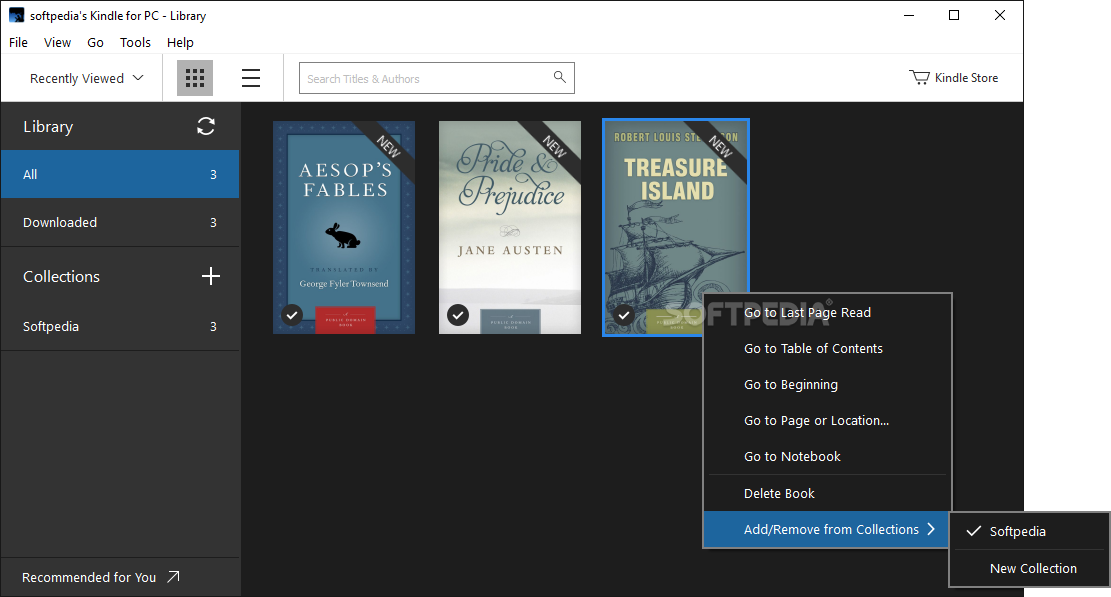

Next a window will appear with anyone nearby who has AirDrop enabled. At the bottom of the menu, tap the AirDrop icon. Tap the Share button to open the Share menu. For example, say you're in the Photos app and you see a picture you want to AirDrop. Tap the name of the device you want to send to. When you do, you'll be shown a list of any nearby Apple devices that also have AirDrop enabled. I'm not sure exactly why this is, but I'd guess it has something to do with the way a VPN encrypts your internet connection.Īnytime you see a Share button on your phone (the rectangle icon with an arrow pointing up), you can select AirDrop. If either of you has a Personal Hotspot enabled, turn it off otherwise AirDrop won't work.

Kindle transfer file from pc Bluetooth#
To use AirDrop on an iPhone, the person you're sending files to needs to have an Apple device withĪnd Bluetooth turned on. At the bottom of the window, you can select who can send stuff to you: No One, Contacts or Everyone. Anyone nearby with AirDrop enabled will appear in this window. A window will open with a radar-like graphic. Note that I haven't actually tried this since I don't have a Kindle and I'm only guessing at the actual file system which you supply to the -t flag for mount, but I'd bet its ext3.On a Mac, check that you have Wi-Fi and Bluetooth enabled. And you can also use the terminal and cd to /mnt/kindle which should show you a mounted Kindle file system. You should be able to see the Kindle in your file manager now. (that assumes you've created a directory called "kindle" under /mnt) You can mount that device as root with this command sudo mount -t ext3 /dev/sdb/ /mnt/kindle/ Of coruse you'll see something different because I doubt the Kindle will identify itself as a generic SD MMC device. You should see something like this lrwxrwxrwx 1 root root 9 Jan 7 20:01 usb-Generic-_SD_MMC_058F63646476-0:0 ->. You can confirm this with sudo ls -l /dev/disk/by-id/ If you look at the last line above, you'll see 'sdb' in brakets, that is the device node that the new USB device is attached too. Or similar and you should see a line like this as well sd 4:0:0:1: Attached SCSI removable disk Look for lines in dmesg like usb 1-6: new high speed USB device using ehci_hcd and address 13 I'd start with dmesg as you've done and note which device node the Kindle is put on. The approach I would take would be to mount the Kindle and then you can cp files over in the terminal or likely even the file browser. If not, try the technical solution below:

Just plug it in and look for a "Kindle Fire" icon to appear in your launcher sidebar. The Kindle Fire is reported to connect properly out of the box by several users. I should note that, since I got Dropbox working on my Kindle, the usb is no longer strictly necessary, but as a matter of principle I'd love to get it working. sd 8:0:0:0: Attached SCSI removable diskįilesystem 1K-blocks Used Available Use% Mounted on sd 8:0:0:0: Attached scsi generic sg2 type 0 scsi 8:0:0:0: Direct-Access Amazon Kindle 0001 PQ: 0 ANSI: 2
Kindle transfer file from pc install#
usb 1-1: new high speed USB device number 5 using ehci_hcd You can transfer files to and from your Kindle Fire as if it were an external hard drive using a USB cable: On a Mac, install the Android File Transfer utility to complete the USB transfer. ieee80211 phy0: wl_ops_bss_info_changed: arp filtering: enabled true, count 1 (implement) Here are the last 15 lines of dmesg after plugging the kindle in: dmesg | tail -n 15 I never get the message on the Kindle telling me it is ready to accept files from the computer, though.

It does not appear to be a usb power issue, since the Kindle Fire wakes up from sleeping when it is plugged in. Other usb devices, such as my ipod and digital camera, are recognized just fine. I'm running Ubuntu 11.10, and when I connect my Kindle Fire to my computer via micro usb, it is not recognized automatically.


 0 kommentar(er)
0 kommentar(er)
